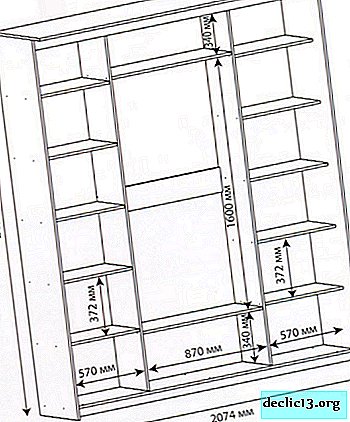How to get rid of a mortgage legally - an overview of 4 proven ways
Hello! Tell me, please, how to get rid of a mortgage? My husband and I took a mortgage for an apartment at a time when we had high incomes. Currently, I have been left without work, and my husband’s salary has been reduced. Plus, we have increased expenses in connection with replenishment in the family. Thus, paying a mortgage became very difficult.
Maria, Sevastopol.
Mortgage (or mortgage) is a type of long-term loan in which money is issued with registration as a pledge of real estate or land.
Large periods of lending and large amounts form a serious financial burden for several years or even decades. For such a long period of time, the life situation of the borrower can radically change.
Most importantly, various life events can negatively affect the level of his solvency. In such a situation, making mortgage payments becomes difficult.
There are several situations when a borrower decides to get rid of a mortgage:
- One side, debtors dream of faster repaying a loan and withdrawing real estate from bail.
- On the other hand, a considerable number of borrowers find themselves in a situation where it becomes too difficult for them to service a loan on existing conditions.
Regardless of the motive, the borrower should know how best to get rid of the mortgage.
 What goals and objectives do debtor-borrowers set for themselves, getting rid of a mortgage
What goals and objectives do debtor-borrowers set for themselves, getting rid of a mortgage
The main goals and objectives of getting rid of a mortgage loan
Not everyone understands, but getting rid of the mortgage burden is often much easier than getting rid of a consumer loan. However, everything is determined primarily by the goals and objectives that the borrower seeks to achieve.
Most often, mortgage borrowers determine the following goals for themselves:
- Keep the collateral property in the property, but at the same time achieve changes to the terms of the mortgage agreement. This will help reduce the credit burden and service the loan on more favorable terms.
- Retain ownership of real estate or land and independently achieve reduced credit burden. This can be achieved by refinancing a mortgage.
- Pay off your mortgage as quickly as possible. At the same time, it does not matter to the borrower whether the subject of the pledge will remain in his property.
At its core, a mortgage is a rather complex form of lending. Such a loan includes two types of legal relations: regarding the subject of the pledge and directly regarding the loan. The two parts are interconnected., therefore, the goals that the borrower sets in relation to them when deciding to get rid of the mortgage also depend on each other.
In most cases, you have to choose save or not ownership of the subject of the pledge. It depends on the decision taken what measures to take in the current situation.
The easiest way to get rid of a mortgage loan is if the borrower is ready to lose the collateral. Moreover, it is property that can ensure the fulfillment of obligations.
If it is important to maintain ownership of real estate or land, the situation is complicated. It will be necessary to independently find a source for paying off the mortgage, refinancing it, or trying to agree with the bank.
Before you begin to choose a method of exemption from credit obligations, should pay attention the ability to resolve this issue with insurance. Most borrowers apply for life insurance as well as health insurance. Moreover, some of them take out liability insurance, including about situations of job loss or income reduction.
Insurance payments can help the borrower to fully or at least partially repay the mortgage. If the policy was not issued, or the situation of the debtor is not an insurance event, you will have to look for another way to solve the problem.
 Legal ways to get rid of a mortgage
Legal ways to get rid of a mortgage
How to get rid of a mortgage loan - 4 proven ways
The method of exemption from a mortgage loan is determined primarily by the ratio of the borrower to the subject of the pledge. Therefore, the possible options are shared on groups it depends on this.
1) There is a need to preserve property
If you want to maintain ownership of the pledged item, you can solve the problem by the following methods.
Method 1 Mortgage Restructuring
If a decision is made on restructuring, you should contact the credit institution with a statement.
The debt restructuring statement reflects:
- reasons that prevent repaying a mortgage on existing conditions;
- documentary evidence of the circumstances;
- expressed a desire to formalize the restructuring.
When the application is considered by the creditor, he will make a decision and offer options for overcoming the current situation:
- during a certain period, the borrower repays only interest, the main debt is frozen;
- extension of the mortgage period and reduction in the size of the monthly payment;
- interest rate reduction.
The options presented are not exhaustive. Lenders develop individual restructuring conditions that are appropriate to the current situation and take into account the position of the borrower now and in the future regarding its financial well-being.
📎 For details on credit restructuring, see our special publication.
Method 2 Refinancing
Refinancing is suitable for those borrowers who issued a mortgage several years ago, when the rate was much higher. Today, most large banks offer similar programs. They are reviewing the conditions of the mortgage, reducing the rate.
However, with such a solution to the issue, the presence and amount of overdue debt is of great importance. First, in order to apply for refinancing, you should contact the lender through whom the mortgage loan was obtained. If he refuses, you can go to another credit institution.
Read about how credit refinancing occurs in one of our articles.
2) It is not planned to keep collateral property
If the borrower does not fundamentally preserve the property, you can use other methods to discharge the debt:
Method 3 Sale of real estate or land
Before you sell collateral, you should get bank permission. Due to the funds received from the sale, the mortgage will be repaid.
When deciding to sell real estate, you will have to obtain the consent of the bank. There are two options: the borrower is engaged in the sale of property or the lender organizes the sale with the permission of the client. In any case, the bank necessarily controls the transaction.
We wrote about how to quickly sell an apartment in a previous article.
Method 4 Transfer of mortgage debt to another borrower
In such a situation, you will first have to get bank consentissuing a mortgage. The lender verifies the new client in the same way as the primary debtor.
Often, the primary borrower is not eliminated from the mortgage relationship. In accordance with the terms of the amended contract, this customer bears jointly or subsidiary liability on a loan.
Regarding the object of the pledge, the issue is decided in accordance with the agreement between the borrower and the bank. In most cases, a scheme for such transactions is developed. individually. After that, all conditions are agreed between all parties to the transaction. However, the main will still be the opinion of the creditor bank.
Most often, relations regarding real estate are decided by one of the following options:
- collateral is held by the primary borrower;
- upon receipt of the consent of the creditor, the property is transferred to the new debtor and remains in the pledge. In this case, the primary borrower is released from any obligations to the creditor.
Take note! Often, borrowers try to free themselves from mortgages by renting out property. The payments received from the tenants go as loan payments.
However, to draw up a lease agreement, you must obtain the consent of the bank. But often debtors ignore this requirement, negotiating with the tenant only verbally. Or they conclude a lease, hoping that the bank will not cancel it. In any case, renting a mortgage apartment is not the best option..
As a conclusion, we present to your attention short table, which contains possible methods of exemption from a mortgage.
| № | Way | Short description |
| Situations when it is necessary to preserve property | ||
| 1 | Restructuring | The borrower submits an application describing the difficulties encountered. As a result, the term can be increased, the rate reduced, the debt frozen for a certain time (only interest is paid) |
| 2 | Refinancing | Held in your or any other bank It implies the issuance of a new loan to repay the old on more favorable terms. |
| It is not planned to save property | ||
| 3 | Property sale | Bank consent required The mortgage is paid off at the expense of funds received from the sale |
| 4 | Transfer of debt to another borrower | Bank consent required The pledge is either retained by the primary borrower or transferred to a new one |
We also recommend watching a video on the topic "Where to get money when they are urgently needed":

The team at Rich Pro hopes to be able to answer your question. If you have any new ones, ask them in the comments below. See you soon!

















